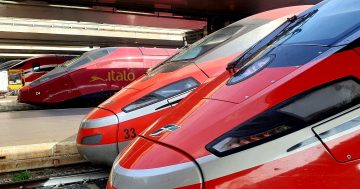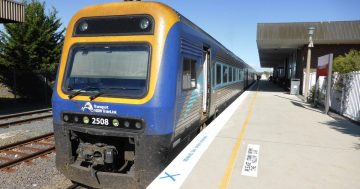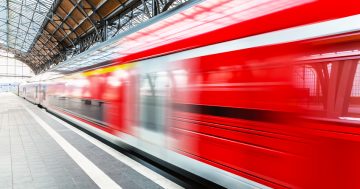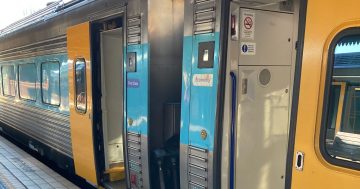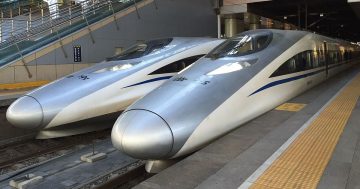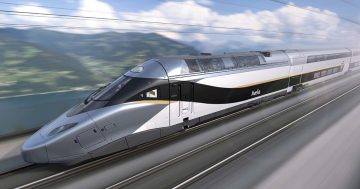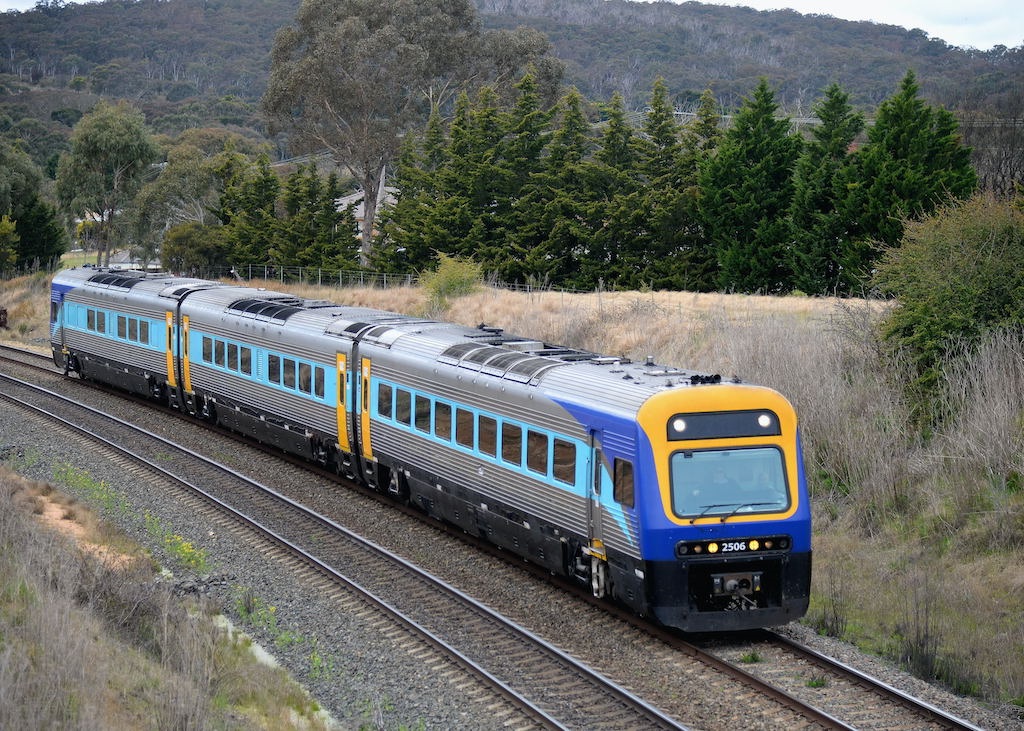
Decades have been spent arguing how to make the trip between Sydney and Canberra more efficient. Photo: Leon Oberg.
Advocacy groups have argued the Commonwealth needs to take the front foot in improving train services between Canberra and Sydney to make it an attractive and viable travel option.
But the question of whether we should be aiming for high-speed rail or just faster rail in general is still up for debate.
Canberra-Sydney Rail Action Group co-convenor Bob Bennett is firmly in the ‘faster rail’ camp, telling the Federal National Capital Inquiry that now was a “pivotal time” for establishing more efficient and effective train services between the two capital cities.
“It goes to a series of debates about whether Canberra should be part of an east coast fast rail,” he said.
“[The option you choose] depends on how quickly you want to do it, and how much you want to spend.”
The group has argued improving the rail service between Sydney and the Territory is essential in maintaining Canberra’s “currency and vibrancy” as the national capital and would contribute to raising the profile of the city.
Mr Bennett said while we already have trains that can travel between 160 km/h and 180 km/h, the infrastructure doesn’t allow that speed to be reached.
The ‘faster rail’ argument suggests it could get the trip between Sydney and Canberra down to between 3 and 3.5 hours – the shorter you want the trip, the more money needs to be spent to get it done.
Mr Bennett said the approach needed to be about “sanity not vanity”, explaining the region didn’t need the fastest train service in Australia, it just needed to be better than the current option.
“A very, very fast train wouldn’t necessarily mean stopping as frequently,” he said.
“You’ve got to establish what your goals are, what you’re willing to pay, and what benefits you want to see … it really depends on what you want to do.”
Mr Bennett argued not only did the infrastructure need to be improved to allow for faster travel times, but more services also needed to be scheduled to keep up with current demand.
According to the Canberra-Sydney Rail Action Group’s submission to the inquiry, the three return trips currently on offer between the two cities were nearing full capacity before the COVID-19 pandemic, with more than 250,000 passengers (or 80 per cent of the service’s capacity) travelling on the corridor in 2018-19.
Mr Bennett said extending the current Xplorer trains with a fourth carriage, along with another three-car return service, and potentially a shuttle service between Canberra and Queanbeyan to Moss Vale would help create better connections.
“We’re now back to and exceeding pre-COVID levels … so more and more [services] are being booked out,” he said.
“Having more frequent services would deal with the other problems, such as access to the Sydney network.”
Another option that has had decades of advocacy is high-speed rail.
University of Wollongong associate professor Philip Laird appeared independently to argue part of this case, but submitted a “middle ground approach” to achieve faster transit times ahead of any high-speed rail project.
“We deserve, you deserve, a better service in Canberra when you want to go to Sydney,” he said.
Assoc Prof Laird submitted that the case for high-speed rail, or even faster rail, couldn’t be made until the necessary land corridors needed either for new tracks or upgrading existing tracks were identified and protected.
He said the case for medium-speed rail was appropriate as a short-term objective to reduce transit times and improve service frequencies.
“All new works should as far as possible be built to [high-speed rail] standards,” Assoc Prof Laird submitted.
“By using Sydney-Canberra as a demonstration project, the successful features of improvements to track, trains and service quality could, in time, be absorbed into a future Melbourne-Canberra-Sydney high-speed rail line.”
The Federal High Speed Rail Authority board was appointed last month, with $500 million in funding to study what works would be needed to establish the Sydney to Newcastle section of the high-speed rail network.












